Weather
/Knowledge

Wind-whipped Washington state to get some relief
SEATTLE — Rain-soaked, wind-whipped Western Washingtonians can breathe a sigh of relief thanks to a calm, if slightly damp, weather forecast ahead.
A powerful thunderstorm with severe winds blew through the region Monday night and Tuesday morning, downing trees and power lines, disrupting train service, and causing power outages for tens of ...Read more

Trump creates uncertainty for world's most cited climate report
Climate diplomats beginning work on the next report from the Intergovernmental Panel on Climate Change — the crucial assessment on global warming that helps shape policy for governments to companies — will meet in China this week without US officials.
U.S. government scientists participating in the IPCC’s global assessments were issued a ...Read more

Mayor Michelle Wu says Boston planning for 'extreme weather events' as effects of climate crisis intensify
BOSTON — Following recent weather disasters across the county, the Boston mayor outlined Thursday how the city is preparing for when more severe heat, coastal flooding, or extreme weather events hit here.
“Over the last few months, our hearts have gone out to the families impacted by some of the worst wildfires in California history, or the...Read more
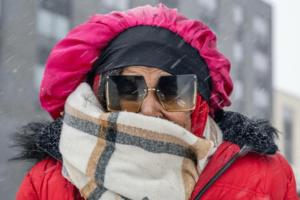
Dangerous cold with record-breaking temperatures keeps Kansas City in deep freeze
KANSAS CITY, Mo. — Record-breaking cold weather will continue in Kansas City as an arctic blast lingers across the area on Wednesday — with the coldest temperatures yet to come.
The metro set a new record for the coldest high temperature for Feb. 18 when temperatures on Tuesday reached 4 degrees. The previous record for that date was 11 ...Read more
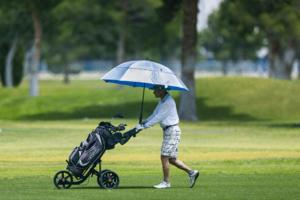
Las Vegas is getting warmer. Nevada has a plan to help combat extreme heat
LAS VEGAS — The nation’s two fastest-warming cities may soon be required by Nevada law to better protect residents from deadly heat in future plans.
More than a dozen organizations and Nevada residents attended a committee hearing to support Assembly Bill 96, which would require any city or county with at least 100,000 residents to amend ...Read more
Extreme cold with sub-zero temperatures freezes Kansas City. How much snow is possible?
KANSAS CITY, Mo. — Kansas City woke up to light snow accumulation Tuesday morning, but can expect more of it to come as snowfall amounts are predicted to reach 3 to 5 inches in most of the metro, according to the National Weather Service.
While snow accumulation continues, dangerous cold wind chills are in the forecast. The winter storm ...Read more
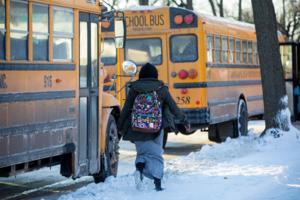
How cold does it have to be for Minnesota schools to close?
MINNEAPOLIS — Thousands of Minnesota students got an extended Martin Luther King Jr. holiday weekend in January as many schools across the state shut down due to extreme cold. Other students were allowed to stay home but had their lessons moved online.
But just how cold does it have to be before in-person school is canceled or switched to an ...Read more
High winds close Bay Bridge, cause thousands of power outages across Baltimore region
More than 100,000 homes and businesses are without power across the Baltimore region as strong, damaging winds gusting up to 60 mph damage power lines, down trees, topple poles and more.
According to Baltimore Gas & Electric Co., outages map, as of 6:30 p.m. Sunday, there were 24,667 customers without power in Anne Arundel; 15,288 in Baltimore ...Read more
1 dead, thousands without power across metro Atlanta after severe storms
At least one person was killed Sunday as severe storms brought heavy winds and rain across metro Atlanta, leaving thousands without power and placing medical staff on high alert at the Clayton County Jail.
Crews were called around 5 a.m. after a tree fell on a home in the 700 block of Matilda Place in northwest Atlanta, according to ...Read more

Valentine's Day snow wreaks havoc on Minnesota's roads
MINNEAPOLIS — Two to 4 inches of snow fell across parts of Minnesota on Friday into Saturday morning, bringing dangerous road conditions that caused spinouts, crashes, jackknifed trucks and injuries, and likely were a factor in the death of a teenage driver in Washington County.
Kyle Everson, a spokesman for the State Patrol, said troopers ...Read more

Los Angeles region to get respite with 'very low impact weather' in coming days
LOS ANGELES — After a stretch of treacherous rains across the Los Angeles region and its recent burn scars, the coming days will bring a needed respite — with the National Weather Service on Saturday predicting "very low impact weather for most areas the next several days."
A "warming and drying trend" is predicted through the weekend, and ...Read more
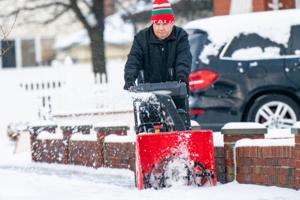
Messy winter storm set to drop snow, rain from NYC to Toronto
New York and the U.S. Northeast will pick up a few inches of snow overnight on Saturday from a winter storm that will also blanket the Midwest and southern Ontario.
New York City may get 1 to 2 inches of snow beginning late afternoon on Saturday before changing to rain. The system will spread heavier snow over a much wider area, with Boston ...Read more
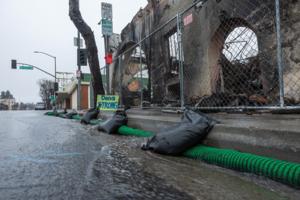
Pacific Coast Highway went from smoldering to flooded in just few weeks: California's drought-to-deluge cycle on steroids
LOS ANGELES — Just five weeks ago, Pacific Coast Highway was smoldering from one of the most destructive firestorms in Los Angeles County history, with burned-out shells where scores of oceanside homes once stood.
On Friday, the storied coastal road had dissolved into a river of mud and debris after a powerful rainstorm sent those burned ...Read more
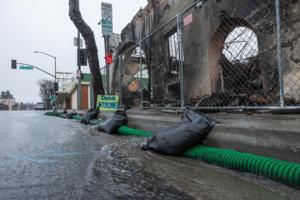
SoCal digs out after mudslides, flooding, rain rescues; tornado damages homes
LOS ANGELES — The biggest storm of the winter walloped Southern California on Thursday, forcing the closure of Pacific Coast Highway, damaging homes and vehicles and bringing with it the possibility of “life-threatening” debris flows just a month after fierce Santa Ana winds propelled a firestorm across Los Angeles County.
Street flooding...Read more
Storm brings flooding, mudslides and new evacuations for fire victims in Southern California
LOS ANGELES — The biggest storm of the winter walloped Southern California on Thursday, but by Friday morning conditions were improving as the storm subsided.
The storm forced the closure of Pacific Coast Highway, damaged homes and vehicles and brought with it “life-threatening” debris flows just a month after fierce Santa Ana winds ...Read more
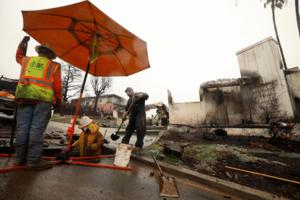
Warning of 'life-threatening' debris flows as torrential rains, flash floods hit LA County
LOS ANGELES — The biggest rainstorm of the season slammed into Southern California on Thursday, bringing with it flash floods, severe thunderstorms and the possibility of “life-threatening” debris flows just a month after fierce Santa Ana winds propelled a firestorm across L.A. County.
The National Weather Service issued flash flood and ...Read more
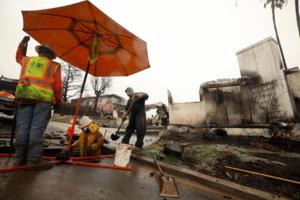
Atmospheric river storm slams into LA County, bringing mudslides and flooding, and trapping cars
LOS ANGELES — Just a month after fierce Santa Ana winds propelled a firestorm across Los Angeles County, residents faced another extreme weather event Thursday. The biggest storm of the season so far hit Southern California, bringing with it mudslides and flooding, and reports of trapped vehicles.
The rain sent a cascade of mud and water from...Read more
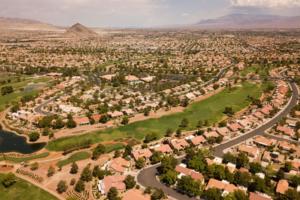
Extreme drought lingers in Las Vegas, even with light rain
LAS VEGAS — This week may have brought an end to the Las Vegas Valley’s second-longest dry streak in recorded history, but don’t expect the light mist to reverse the region’s drought.
Almost all of Clark County remains under “extreme” drought conditions, with the northwestern corner under even more intense “exceptional” drought ...Read more
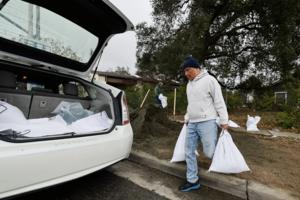
Race to protect homes, residents in burn zones as major rainstorm slams into L.A.
LOS ANGELES — Officials raced to prepare for possible debris flows in areas burned during the January fires as a strong storm moved into Southern California on Wednesday.
Crews have rushed to clear out 154 basins designed to catch mud, rocks and other debris from tumbling into neighborhoods. They have also installed thousands of sandbags, K-...Read more
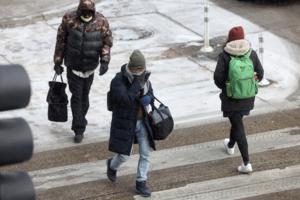
2 major winter storms expected to hit Chicago area this week
CHICAGO — Two major winter storms are expected to hit the Midwest this week, with moderate to heavy snowfall in the Chicago area. Between the two storms, residents could see close to a foot of snow from Wednesday through Saturday.
The first storm could begin as early as Wednesday morning, although the brunt of the storm is expected to come ...Read more
Popular Stories
- Wind-whipped Washington state to get some relief
- Dangerous cold with record-breaking temperatures keeps Kansas City in deep freeze
- Trump creates uncertainty for world's most cited climate report
- 1 dead, thousands without power across metro Atlanta after severe storms
- Las Vegas is getting warmer. Nevada has a plan to help combat extreme heat





